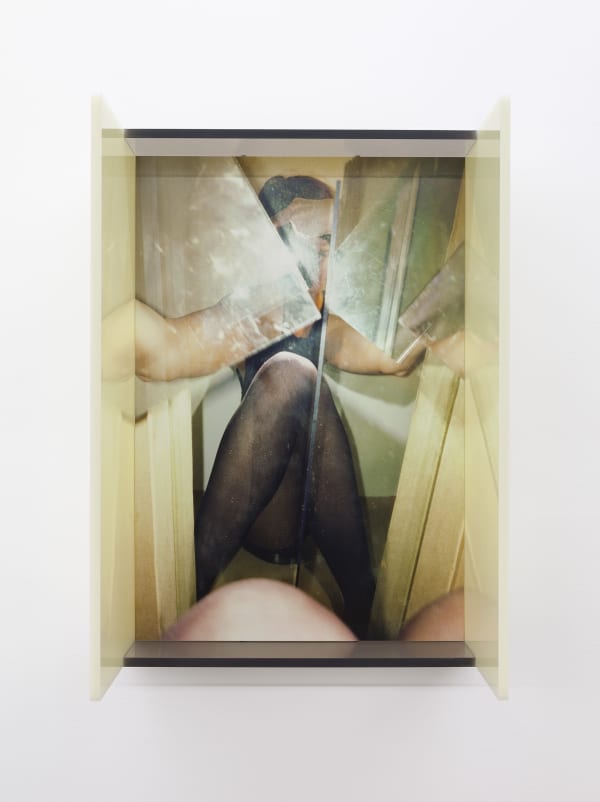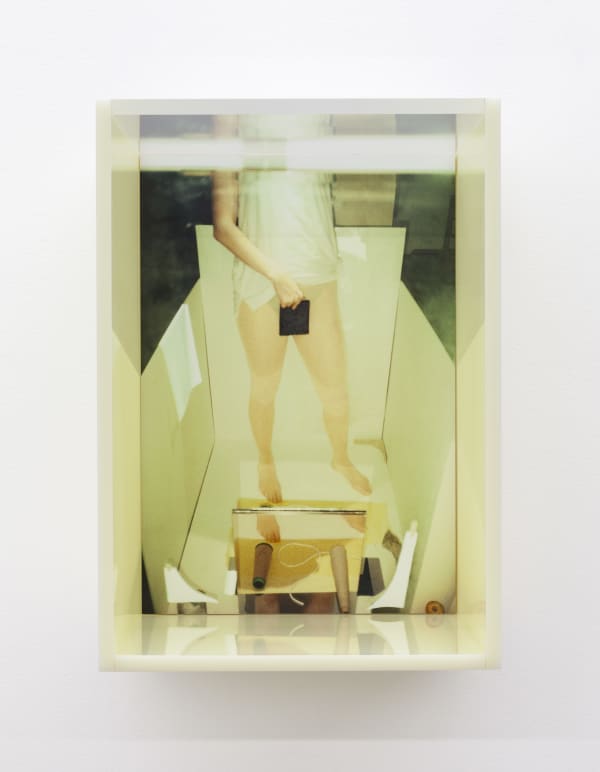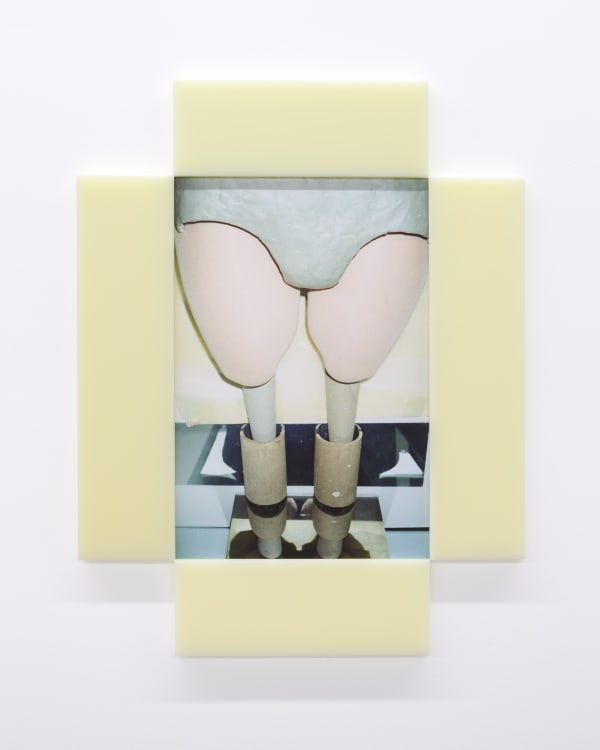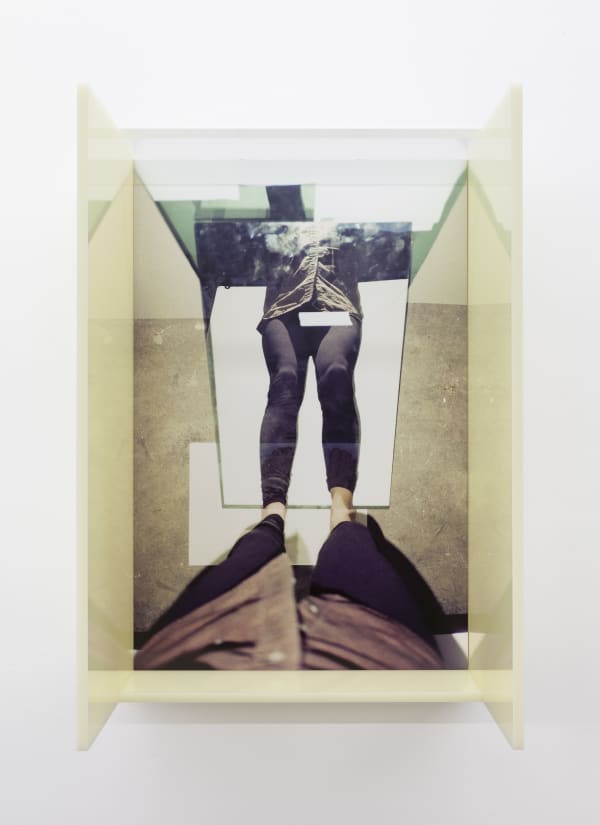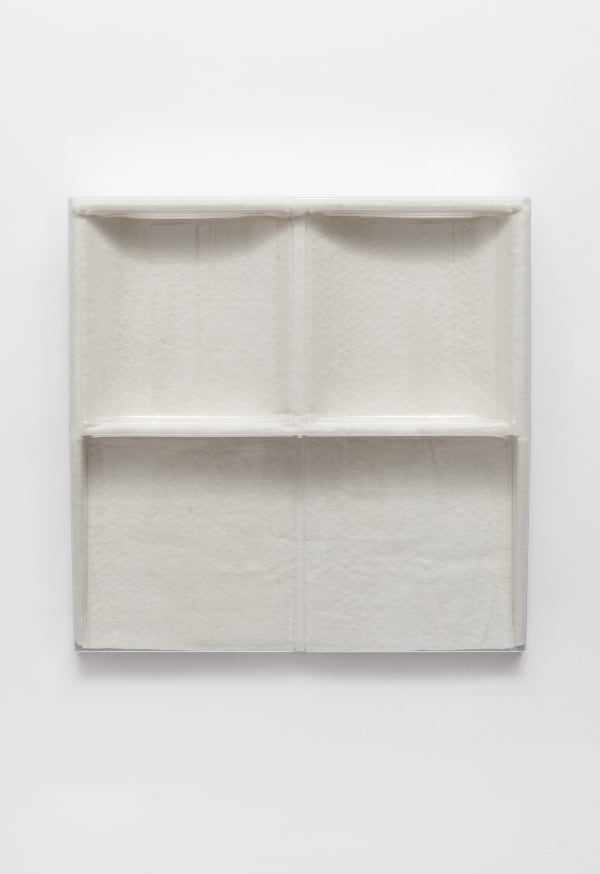B. INGRID OLSON: Fingered Eyed
What happens at the intersections of mise-en-scène, l’esprit de l’escalier, and mise en abyme? Or better yet: what happens when an art-making practice extends beyond those tools of which we’ve become accustomed? Pushing back becomes a launching off. Or, per Ezra Pound through Rosemary Waldrop: a center around which, not a box within which.
It is a rare measure of success when the vocabularies a viewer might draw upon to alleviate the effects of phenomena are themselves destabilized. B. Ingrid Olson’s work to date has troubled the divisions of media classification: while at once so much more than “sculpture and photography in architecture,” the work is, of course, mostly sculptural, often photographic, and always architecturally-situated. And yet, the most fitting description doesn’t describe much, seems to not fully fit—to use it at this point is to do so for traction alone. While it is true that the work deserves attention through distinct frames (or lenses, or contexts, or traditions), it is doubly true that these two severed halves (the sculptural, photographic) might combine back together (in-exhibition) so as to produce a fullness that exceeds the whole. If in the exhibition we approach the sculptural and photographic works as fundamentally distinct, then perhaps we are mirroring—making symmetric, folding together—their individual approaches.
When two people talk, a third voice emerges. As this voice emerges from the conversation, in some ways this is the first voice. It is in this way that discourse argues against the perpendicular, which is to say temperaments and their sway work against junctions. We explore halves and wholes: just as the way in which equivocation can be identified as equating two different meanings of one word, or, an argument that uses one word to mean two different things, the lines we follow in Olson’s work emerge from an unfolding rather than from a mark-making. If, per Anne Truitt: Here, where my pencil touches the paper, is the place at which a body holds itself intact, Olson might mark the moment wherein the body—hers? ours?—becomes half-strange, bisected, all the while dual, open, un-halved.
As Olson’s work unfolds, it produces a version of symmetry that disputes equality. The work engenders the slip, an equivocation, a sliding of halves. In this field—itself material and scopic—everything is an object (and to those who object: please prove otherwise.) A more unsteady proposal is to say that everything seen—that is everything under the sway of sight—is a picture. Everything that operates as an image is sited by the lens, be it the mark of the shutter of the camera or the mark of the blink of the eye. This exhibition prioritizes differences between the singular and the synthesized, between the monocular and binocular respectively, both of which fold and unfold in ways more novel than any bio/mechanical distinction between lenses of glass or flesh. For Olson, photography seems a set of now-fixed alternative events that occur under the survey of the monocular apparatus thereinto presented for the binocular viewer.
The edges of Olson’s photographic objects (Plexiglas, dye sublimation print on aluminum, MDF) extend out from the wall to the viewer like blinders, corralling them one at a time, providing direction for singular events of looking. Any greater focus of vision would require a strapping in. If to any recognizable degree the photographic continues to retain a general factuality, then it would be the case that one of the projects of Olson’s photographic work is to summon multiple truths simultaneously: why else would the artist insist on the image of the mirror, a mirror verifying nothing for the viewer save its utilization by the artist? To fix the mirror, which is to picture static something that, at its core, exists as the site of full reflexivity, is a decision that reminds the viewer of the limits of their reach. The temperament of assuredness relies on the collection of many half-truths.
The images and sculptures alike are interruptions: they interrupt both space and the cohesive visuality. It is because they use the familiar anew that their prevarication—their parallelism—operates in a way that creates a theatre-space out of determinism, which is life lived under architecture. There are some things one can’t unsee: we change. As for the sculptural works (which is to say, the works without photographic output), their genesis, and their presence, is a sight unseen, a thing soon scened. Their being in space cannot be undone: again we change.
The sculptural works in this exhibition each affix to a plane, they disrupt the wall, using it as a site from which to grow. And yet its opposite: The grain of sand, the irritant, initiates the pearl, it is the mollusk that produces it. Olson’s sculptures catalyze the viewer, they challenge the smoothness of experience, materializing and atomizing both architecture and its opposite (ambiance) contained therein. The sculptures emit as much as they exist. On the one hand, the sculptural works use as fuel—which means: they burn—ambiguity. They are both a disruption and a feature; they present an opportunity like a fork in the road. On the other hand, they insist on existing as fact, commanding, commandeering, the concrete. Artists often work at the apex of these pulls and sways, though might it be the case that in Olson’s work, we see the coexistence of these temperaments, the acceleration of these modes as dually original. These works surface from a studio methodology that might not automatically privilege the cast over the mold or the print from the plate. Between the photographic and the sculptural, Olson’s full body of work itself gives us the tools to consider two independent, yet simultaneous strands of thought. Or, as written by Gertrude Stein: Act so that there is no use in a centre.
Some things cannot be condensed or speeded up. These things—exhibitions, practices, questions—spread in a motion that ascends from the individual velocities and trajectories of the objects—artworks, exhibitions, answers—from which they are built. This larger spread is located in its sway; it prefers the act over the border: if it includes you, you’re under it. If you can see it, you’re out of it.
- Andrew Blackley



